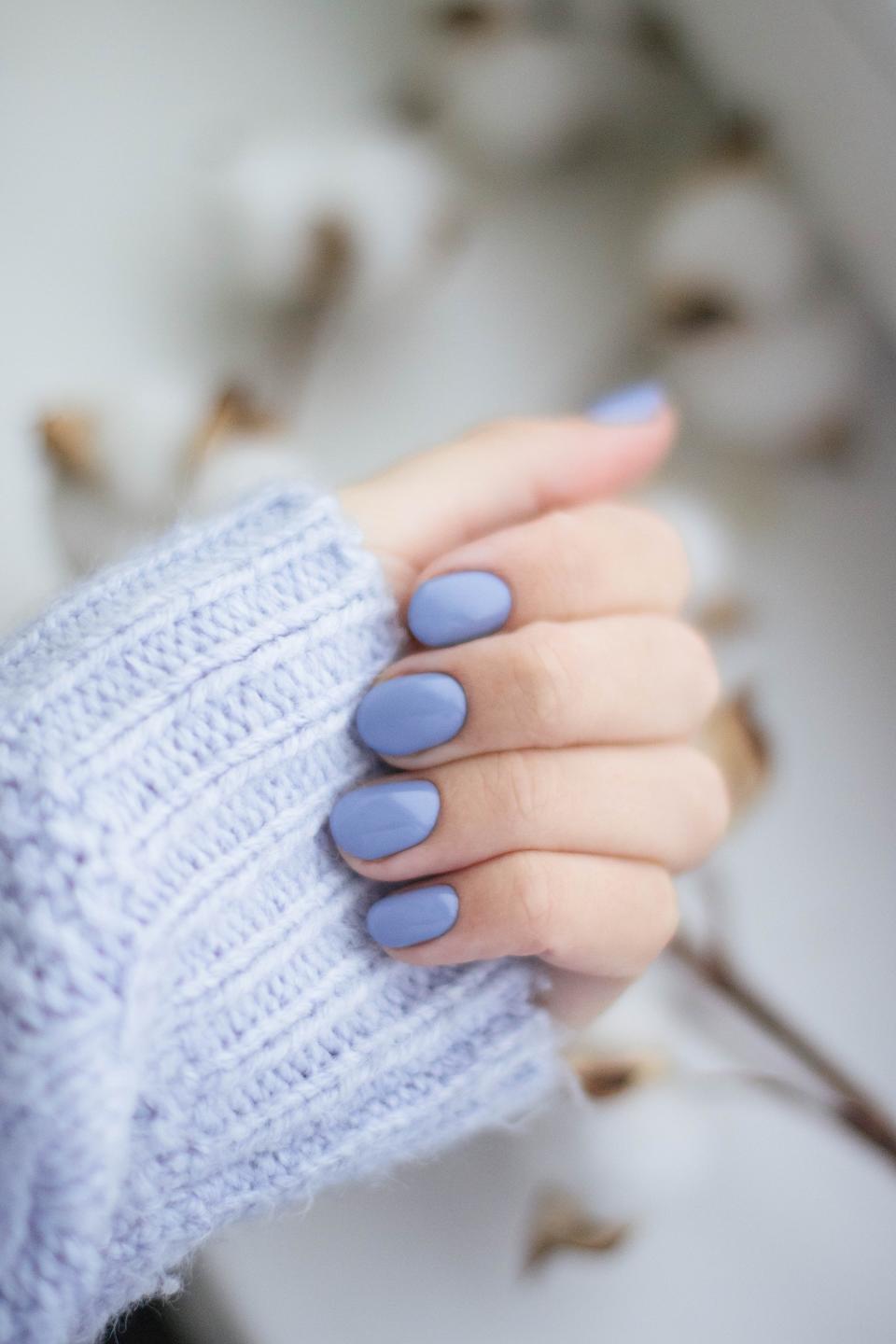This is what finally got me to stop biting my nails
I’ve probably eaten about 17 pounds of plastic in my lifetime.
No, I’m not about to launch into a tale of My Strange Addiction proportions. I’m just a chronic nail biter (in psychiatry terms, an onychophagic) who recently realized the polish I’ve been chipping away at while gnawing my fingernails down to lil’ nubs is basically glorified plastic. Well, plastic mixed with a cocktail of equally unappetizing chemicals. That I’ve been inadvertently ingesting. For years.
This isn’t new information—of course the smooth, shiny sheen and tough-but-flexible finish of polish comes courtesy of plasticizers. And in most cases, coating your nails in colored polymers poses approximately zero health risks. But coating your digestive tract in them? The thought of my already-sensitive stomach lined with microscopic plastic particles scared me so much, I stopped nail biting cold turkey. (What can I say? My overwhelming anxiety makes me do nonsensical things… like, uh, chow down on my fingernails in the first place.)
I know this sounds over-the-top. I know this sounds unnecessary. Craving validation, I reached out to the experts: Kelly Dobos, a cosmetic chemist who actually formulates nail lacquer, and Shel Pink, the founder of SPARITUAL’s vegan, 12-free polish. Their insight, sadly, confirmed my suspicions—and never again shall my teeth and my nails meet.
“Nail polish is comprised of five essential classes of ingredients: film formers, plasticizers, solvents, suspension agents, and colorants,” Dobos tells HelloGiggles. A single bottle of nail polish can contain up to 50 individual chemicals within these categories—which makes sense. Nail polish needs to do a lot of things. “It must apply easily, dry quickly, and remove easily,” Dobos says. “And unlike any other cosmetic, nail polish must wear for days, despite being subjected to many physical and chemical insults.” Honestly, those are pretty high expectations. I kinda feel bad for the poor little polish formulas.
Nail lacquer used to contain some super sketchy ingredients in order to meet these standards—the sketchiest of which are now known as “the Toxic Three.”

“The ‘Toxic Three’—formaldehyde, toluene, and dibutyl phthalate or DPB—are all listed on Proposition 65, a list of ingredients known to the state of California to cause cancer or reproductive toxicity,” Pink shares. “’Formaldehyde’ is not commonly used in nail polish because it is a gas—what has been used is formaldehyde resin, which could give off formaldehyde under heated conditions,” she says. Thankfully, carcinogenic formaldehyde resin isn’t typically seen in polish anymore, although it is a listed ingredient in Essie Nail Polish. (Eek!)
Toluene and DPB have also been phased out of the industry for the most part, and for good reason. Both are linked to developmental and reproductive toxicity, and in some cases, birth defects. (So, yeah, not the kind of chemicals you want to sink your teeth into.) “Today, there are numerous alternatives to formaldehyde resin, like toluenesulfonamide/epoxy resin, polyester resins, and acrylate/methacrylate copolymers,” Dobos explains. “Toluene has been replaced with other solvents, like butyl acetate or ethyl acetate, and DPB use [is] likely nonexistent today.”
The Toxic Three aren’t the only unsavory ingredients at your fingertips, though—hence, the rise of “5-free” and “10-free” (and every number in between) nail products.
SPARITUAL, for one, is 12-free. “Our Nourishing Vegan Color formula is formulated without DBP, toluene, formaldehyde, formaldehyde resin, camphor, TPP, MEHQ/HQ, gluten, parabens, ethyl tosylamide, xylene, MIT, or animal-derived ingredients,” Pink explains, noting that she’s not attached to a specific “free from” number. “For us it’s about transparency and being responsive to our consumer’s concerns.” Over the years, as more scientific research on safety emerges, SPARITUAL’s ingredient list has evolved. The same can be said for Orly (12-free), Orosa (14-free), AILA Cosmetics (15-free), J. Hannah (8-free), Olive & June (7-free), and more.
But while modern mani formulas may be better for your overall health, they’re not necessarily better for biters…because it’s pretty much impossible to create a nail product free from plastic particles.

Obviously, there haven’t been any studies done on what happens when you, uh, eat nail polish. Probably because everyone knows you are not supposed to eat nail polish. I repeat: You are not supposed to eat nail polish. But what happens when you—and by “you,” I mean “I”—do?
“When researchers from Johns Hopkins looked at the impact of eating seafood contaminated with microplastics, they found the accumulated plastic could damage the immune system and upset a gut’s balance,” reports National Geographic. “In 2017, a study out of King’s College in London hypothesized that, over time, the cumulative effect of ingesting plastic could be toxic.” True, humans regularly ingest microplastics via water, seafood, and even the air we breathe—but am I about to knowingly add to that toxic load with my onychophagic tendencies? No, thanks.
Besides, the issue with ingesting polish doesn’t start and stop with plasticizers—colorants are problematic, too. “The colorants used in cosmetics are highly regulated in many countries,” says Dobos. “Some colorants, like ultramarines, can be used in nail colors but are not permitted in lip products due to safety concerns over possible ingestion.”
As a self-described synthetic-chemical-averse clean beauty freak, that’s all I need to know. Nail biting, bye!
Side note: I’ve never been happier that gel nail polish is too tough for my teeth. Gel formulas generally contain all of the above, plus “photoinitiators“—like azobisisobutyronitril, benzoyl peroxide, and camphorquinone—that harden under UV light lamps, in addition to HEMA and di-hema trimethylhexyl dicarbamate, both of which have been associated with tumor formation. Side side note: In just 10 minutes under those gel lamps, “a person’s hands receive an energy dose equivalent to the day-long recommended limit for outdoor workers,” according to the Journal of American Academy of Dermatology. In other words, skin cancer is a legit concern over time. Don’t skip the pre-mani SPF, gel aficionados.
Still struggling to break the habit?
Pink’s final piece of advice might be just the motivation you need. “Whether you have nail polish on or not, it is a health concern to bite your nails, more so due to the dirt that collects under the nail and the surfaces your fingertips are touching,” the expert says. “So everyone who bites your nails, stop doing it.”

